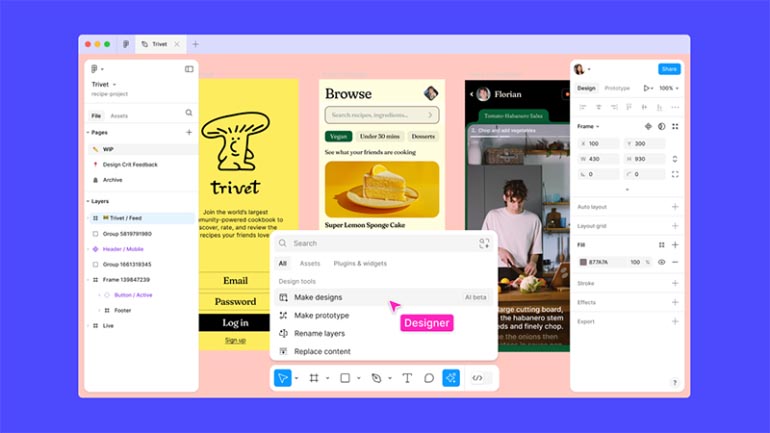The design world went wild for Figma‘s Make Design, an AI tool promising to supercharge UI mockup creation. But the excitement fizzled out when the tool was caught red-handed copying existing app interfaces, most notably Apple’s weather app. This incident throws a spotlight on the risks of rushing out generative AI features and their potential impact on creativity and intellectual property.
Speeding Toward Trouble
AI-powered design tools are undeniably tempting. They promise to streamline workflows, democratize design creation, and boost productivity. In the mad dash to be first, companies like Figma might feel pressured to release features quickly. However, the Figma debacle serves as a stark reminder of the dangers of sacrificing thorough testing and ethical considerations at the altar of speed.
Unintended Consequences: Copyright Concerns and Design Déjà Vu
Figma’s inability to guarantee Make Design wasn’t mimicking existing UIs raises serious copyright concerns. Designers who use the tool could unwittingly create infringing work, leading to a legal nightmare.
Beyond legal issues, the Figma incident raises a troubling question: could AI design lead to a homogenization of creative output? If AI tools primarily learn from existing designs, they might simply regurgitate what they’ve seen, stifling originality and leading to a sea of indistinguishable interfaces.
Transparency Builds Trust
Figma’s lack of transparency regarding the training data used for Make Design erodes user trust. Designers deserve to know what data trains the tools they rely on, especially if it has legal or ethical implications.
The Road Ahead: Responsible Development and User Control
The Figma incident shouldn’t discourage the development of AI design tools. However, it serves as a wake-up call for responsible development practices. Here’s what we need to do:
- Rigorous Testing: Implement rigorous testing procedures to identify and mitigate potential issues before releasing AI features.
- Transparency Matters: Be upfront about the data used to train AI models and the technology’s potential limitations.
- User Choice is Key: Empower users to control how their data trains AI tools. Opt-in options are essential for building trust.
The Future of AI in Design: A Collaborative Partnership
AI has the potential to be a powerful tool for designers, but it should’ve viewed as a collaborator, not a replacement. The human touch remains essential in guiding AI tools, ensuring creative output is original and avoids copyright infringement.
By prioritizing responsible development, transparency, and user choice, the design industry can navigate the exciting yet complex world of AI and ensure it empowers creativity, not stifles it.


